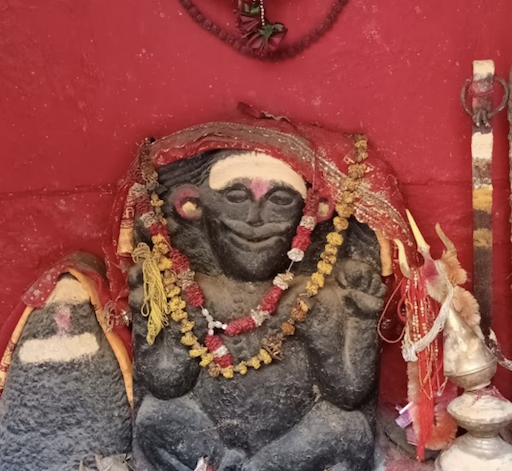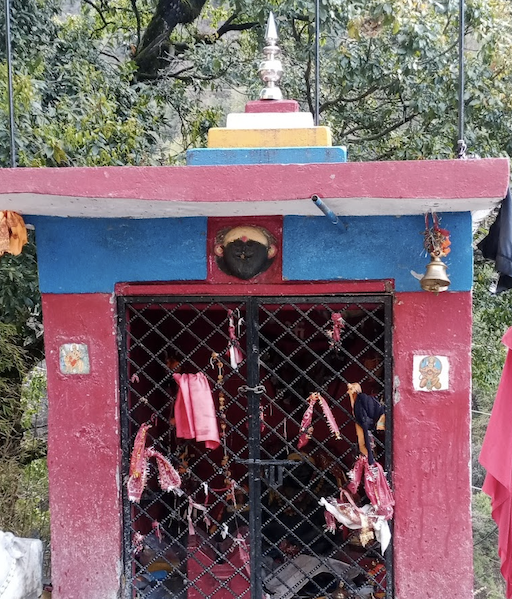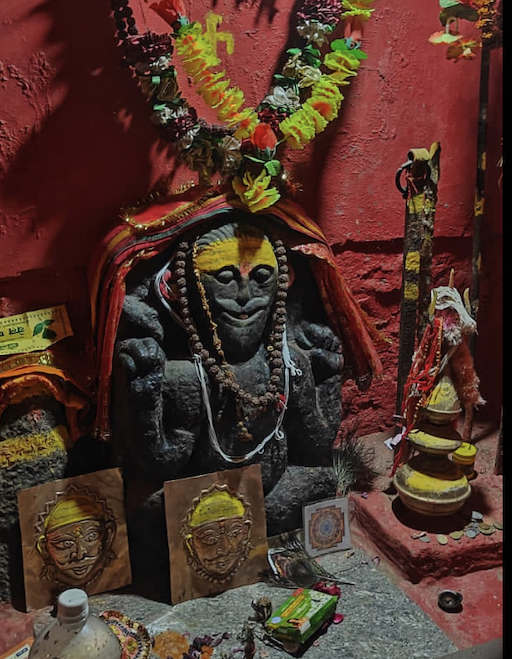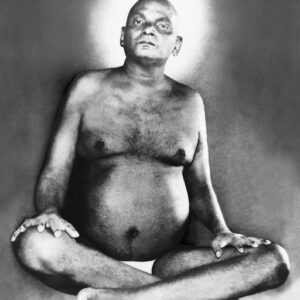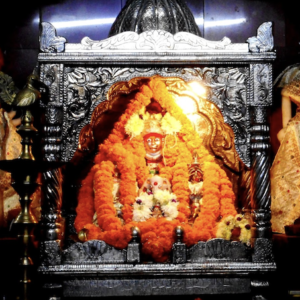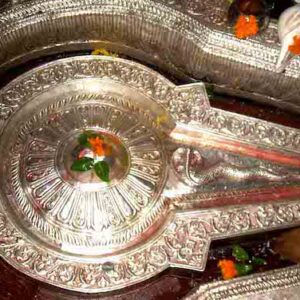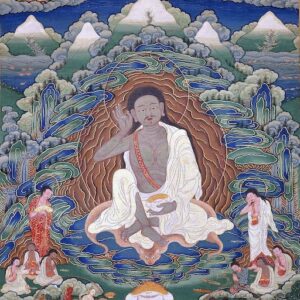It is a consecrated Bhairavnath shrine 450 m from Gaurikund on the trekking road to Kedarnath.
You can go close to sit and meditate. You can go into meditative states here effortlessly.
How to Get There:
This shrine is 450 m from Gaurikund on the trekking road to Kedarnath.
Map: https://goo.gl/maps/Hnv4poryQWAZD4qz7
About Bhairav
Bhairava (Sanskrit: भैरव, lit. ’frightful’), or Kala Bhairava, is a Shaivite and Vajrayāna deity worshiped by Hindus, Jains and Buddhists. In Shaivism, he is a powerful manifestation, or avatar, of Shiva associated with annihilation.[1][2][3] In Trika system Bhairava represents Supreme Reality, synonymous to Para Brahman.[4][5] Generally in Hinduism, Bhairava is also called Dandapani (“[he who holds the] Danda in [his] hand”), as he holds a rod or Danda to punish sinners, and Svaśva, meaning “whose vehicle is a dog”.[6] In Vajrayana Buddhism, he is considered a fierce emanation of boddhisatva Mañjuśrī, and also called Heruka, Vajrabhairava, and Yamantaka.[7][8]
He is worshiped throughout India, Nepal, Indonesia, Sri Lanka and Japan as well as in Tibetan Buddhism.[9][10]
Etymology
Bhairava originates from the word bhīru, which means “fearsome”. Bhairava means “terribly fearsome form”. It is also known as one who destroys fear or one who is beyond fear. One interpretation is that he protects his devotees from dreadful enemies, greed, lust, and anger. These enemies are dangerous as they never allow humans to seek God within. There is also another interpretation: Bha means creation, ra means sustenance and va means destruction. Therefore, Bhairava is the one who creates, sustains and dissolves the three stages of life. Therefore, he becomes the ultimate or the supreme.[11]
Legend
The origin of Bhairava and Vishnu which is recounted in the Shiva Puranam.[12] In it, Vishnu inquired of Brahma, “Who is the supreme creator of the Universe?” Arrogantly, Brahma told Vishnu to worship him as Supreme Creator. One day, Brahma thought “I have five heads. Shiva also has five heads. I can do everything that Shiva does and therefore I am Shiva.” Brahma became a little egotistical as a result of this. Additionally, he began to forget the work of Shiva and also started interfering in what Shiva was supposed to be doing. Consequently, Shiva threw a small hair from his head which assumed the form of Kala Bhairava and casually went to cut off one of Brahma’s heads. The skull (kapala) of Brahma is held in the hands of Kala Bhairava, Brahma’s ego was destroyed and he became enlightened. From then on, he became useful to himself and to the world, and deeply grateful to Shiva. In the form of the Kala Bhairava, Shiva is said to be guarding each of these Shakti Pitha (Shakti temples). Each Shakti Pitha is accompanied by a temple dedicated to Bhairava.[13][14]
There is another school of thought that states that Shiva himself created Bhairava. It states that there was once an asura named Dahurāsura, who got a boon that he could be killed only by a woman. Parvati took the form of Kali to kill him. The wrath of Kali killed the asura. After killing the asura, her wrath metamorphosed as a child. Kali fed the child with her milk. Shiva made both Kali and the child to merge with him. From this merged form of Shiva, Bhairava appeared in his eight forms (Aṣṭāṅga Bhairavas). Since Bhairava was thus created by Shiva, he is said to be one of the sons of Shiva.[15]
The Puranas also give a version of Bhairava. In this version there was a war between devas and asuras. To eradicate the asuras, Shiva created Kala Bhairava from whom Aṣṭāṅga Bhairavas were created. These Ashta Bhairavas married Ashta Matrikas. These Ashta Bhairavas and Ashta Matrikas have dreadful forms. From these Ashta Bhairavas and Ashta Matrikas, 64 Bhairavas and 64 Yoginis were created.[16]
